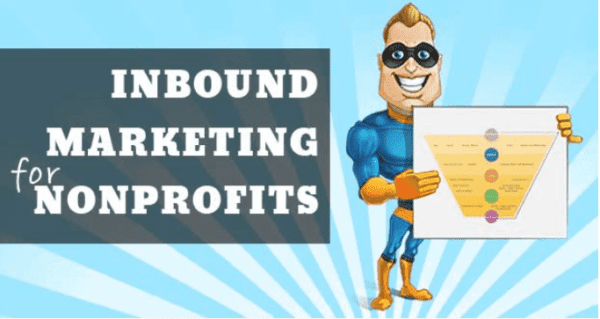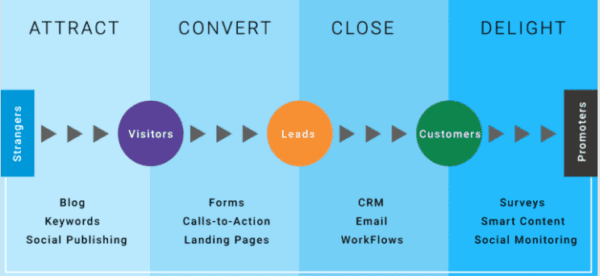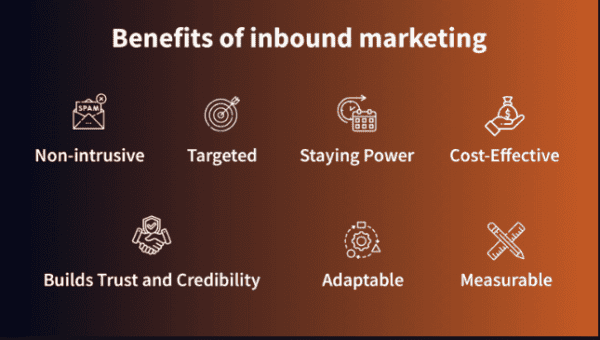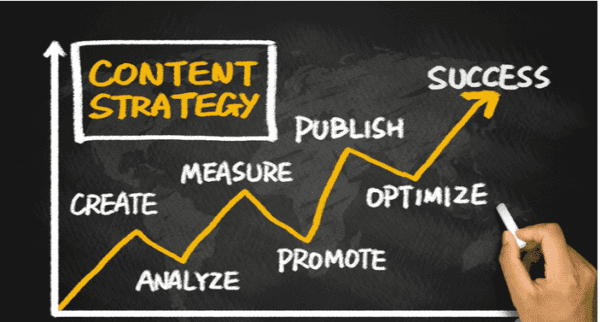Are you having trouble attracting the right audience to your nonprofit organization? Do you find it challenging to build trust with potential donors and supporters? If so, you may consider implementing nonprofit inbound marketing strategies into your marketing plan.
Nonprofit inbound marketing attracts potential donors, volunteers, and supporters to your organization through valuable content and engagement. By providing your audience with relevant information and building trust, you can turn strangers into loyal supporters of your cause.
Inbound marketing for nonprofits involves creating content that resonates with your audience, whether it’s through blog posts, social media posts, or email newsletters. The goal is to provide value to your audience, establish your organization as a thought leader in your industry, and ultimately drive more traffic to your website. By implementing nonprofit inbound marketing strategies, you can increase your organization’s visibility, build trust with potential supporters, and ultimately achieve your fundraising goals.

Understanding Inbound Marketing for Nonprofits
Inbound marketing is a strategy that focuses on attracting potential donors to your nonprofit organization through relevant and helpful content. It’s a customer-centric approach to building trust and relationships with your target audience. Inbound marketing differs from traditional marketing methods, often interrupting people with ads and other promotional materials.
The Inbound Marketing Methodology
The inbound marketing methodology comprises four stages: attract, convert, close, and delight. Each stage is designed to move potential donors through the funnel, from awareness to advocacy.
- Attract: In this stage, you create content that attracts potential donors to your website. You can use a variety of tactics, such as blogging, social media, and search engine optimization (SEO), to drive traffic to your site.
- Convert: Once you have attracted potential donors to your site, you must convert them into leads. You can do this by offering something of value, such as an ebook or whitepaper, in exchange for their contact information.
- Close: In this stage, you turn your leads into donors by nurturing them with targeted content and personalized emails. You can also use marketing automation tools to streamline this process.
- Delight: Finally, you delight your donors by providing them with exceptional service and support. You can do this by sending them personalized thank-you notes, providing them with exclusive content, and asking for feedback.

Benefits of Inbound Marketing for Nonprofits
Inbound marketing has several benefits for nonprofit organizations.
- Cost-effective: Inbound marketing is often more cost-effective than traditional marketing methods. You can create and distribute content through your website and social media channels, saving you money on advertising.
- Builds trust: Inbound marketing is about building trust and relationships with your target audience. You can establish yourself as a thought leader in your industry by providing them with valuable content and personalized emails.
- Generates leads: Inbound marketing can help your nonprofit organization create more leads. You can build a database of potential donors by offering something of value in exchange for contact information.
- Increases donations: Finally, inbound marketing can help you increase donations to your nonprofit organization. By nurturing your leads with targeted content and personalized emails, you can turn them into loyal donors passionate about your cause.

Related Posts:
Developing a Content Strategy
Creating compelling content is essential for nonprofit inbound marketing. You must provide your audience with valuable, informative, and engaging content that resonates with them. Doing so can attract new supporters, retain existing ones, and further your cause. Here are a few tips on how to create a content strategy for your nonprofit:
Creating Compelling Content
The key to creating compelling content is understanding your audience and their needs. What are they interested in? What problems do they face? What questions do they have? Once you know your audience well, you can create content that speaks directly to them. Make sure your content is informative, engaging, and easy to read. Use images, videos, and infographics to make your content more visually appealing.
Blogging for Nonprofits
Blogging is a great way to create fresh, relevant content to attract new supporters and engage existing ones. Your blog should regularly be updated with content pertinent to your cause and audience. Use your blog to share stories, news, and updates about your organization. Make sure your blog is easy to navigate and shareable on social media.
Leveraging Ebooks and White Papers
Ebooks and white papers are great tools for nonprofit inbound marketing. They allow you to provide your audience with in-depth information about your cause, your organization, and the impact you are making. Ebooks and white papers should be well-researched and informative. Use them to educate your audience about your cause and to demonstrate the impact your organization is making.

Related Posts:
Optimizing Digital Presence
To maximize your nonprofit’s digital presence, focusing on website content, SEO, email marketing strategies, and social media engagement is essential. By optimizing these areas, you can increase visibility, attract new supporters, and deepen relationships with existing donors.
Website and SEO
Your website is the foundation of your digital presence. Ensure it is easy to navigate, visually appealing, and mobile-friendly. Use clear and concise language to convey your nonprofit’s mission and goals. Optimize your website content so potential supporters can easily find you online. Use keywords and meta descriptions to ensure your website ranks high on search engine results pages.
Email Marketing Strategies
Email marketing is an effective way to engage with supporters and keep them informed about your nonprofit’s activities. Share updates, news, and success stories through email marketing. Encourage supporters to sign up for your email list, and ensure your emails are visually appealing and easy to read. Include a clear call to action to call to actioners to donate or get involved.
Social Media Engagement
Social media is a powerful tool for reaching new supporters and engaging with existing ones. Use platforms like Facebook, Twitter, and Instagram to share updates, news, and success stories. Use hashtags to increase visibility and encourage supporters to share your content. Engage with supporters by promptly responding to comments and messages.

Related Posts:
Fostering Donor Relationships
One of the primary goals of nonprofit inbound marketing is to build strong and lasting relationships with donors. You can increase donor retention and encourage repeat donations by fostering trust, dedication, and a deeper connection with your organization. Here are a few strategies to help you foster stronger donor relationships:
Engaging with Donors
Engaging with donors is a critical component of nonprofit inbound marketing. By actively communicating with donors and addressing their concerns, you can build trust and foster community around your organization. Here are a few ways to engage with donors:
- Send personalized emails that address donors by name and thank them for their contributions.
- Share stories and updates about your organization’s impact to inform donors about your progress towards your mission.
- Encourage donors to share their stories and experiences with your organization through social media or other channels.
Utilizing CRM and Marketing Automation
CRM (Customer Relationship Management) and marketing automation tools can help you manage donor relationships more effectively. You can tailor your communications to their needs and interests by tracking donor interactions and preferences. Here are a few ways to utilize CRM and marketing automation:
- Use CRM software to track donor interactions and preferences, such as donation history, communication preferences, and interests.
- Set up automated email campaigns to send personalized messages to donors based on their behaviour and interests.
- Use segmentation to group donors based on shared characteristics, such as donation history or location, and tailor your communications accordingly.
By implementing these strategies, you can build stronger relationships with your donors and encourage repeat donations. Remember to always prioritize transparency, honesty, and authenticity in your communications to build trust and foster community around your organization.

Measuring Success and Analytics
Measuring success is crucial for any nonprofit inbound marketing strategy. It helps you understand the effectiveness of your marketing efforts and optimize them for better results. Fortunately, several tools and metrics help you measure success and track analytics.
One of the most important metrics to track is Return on Investment (ROI). This metric helps you understand the financial impact of your marketing efforts. By comparing the cost of your marketing efforts to the revenue generated, you can determine the ROI of your campaigns. This information can help you optimize your marketing efforts for better results.
Another critical metric to track is website traffic. By monitoring website traffic, you can determine how many visitors are coming to your website and where they are coming from. This information can help you optimize your website for better results and ensure your marketing efforts reach the right audience.

In addition to these metrics, setting goals for your marketing efforts is essential. By setting clear goals, you can measure success and track progress. This information can help you optimize your marketing efforts and achieve the desired results.
Regarding reporting and analytics, several tools are available to help you track and analyze data. Google Analytics is one of the most popular tools for tracking website traffic and other metrics. It provides detailed reports on website traffic, user behaviour, and other essential metrics.
Measuring success and analytics is crucial for any nonprofit inbound marketing strategy. By tracking metrics like ROI, website traffic, and goals, you can optimize your marketing efforts for better results. With the right tools and metrics, you can ensure that your marketing efforts are practical and reach the right audience.



